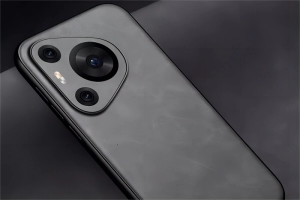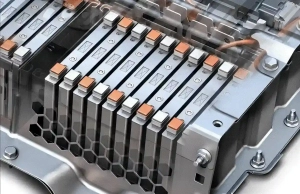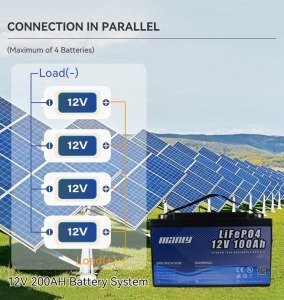More Products11 Key Factors to Consider When Selecting Your Kid's Ride On Car

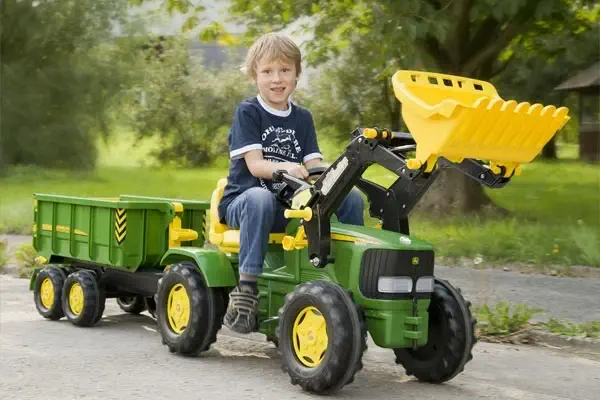
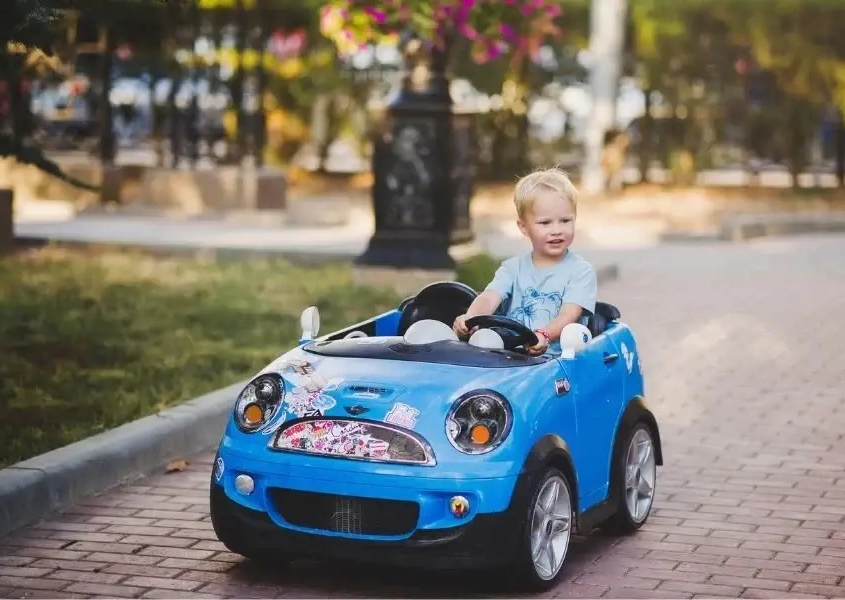 Each type of ride on car offers a unique play experience, promoting different skills and levels of engagement. Therefore, consider your child's age, interests, and abilities when making a choice. Whether it's the hands-on interaction of a push/pull car, the physical activity involved with a pedal car, or the thrill and excitement of an electric car, there's a perfect ride on car out there for every child.
Each type of ride on car offers a unique play experience, promoting different skills and levels of engagement. Therefore, consider your child's age, interests, and abilities when making a choice. Whether it's the hands-on interaction of a push/pull car, the physical activity involved with a pedal car, or the thrill and excitement of an electric car, there's a perfect ride on car out there for every child.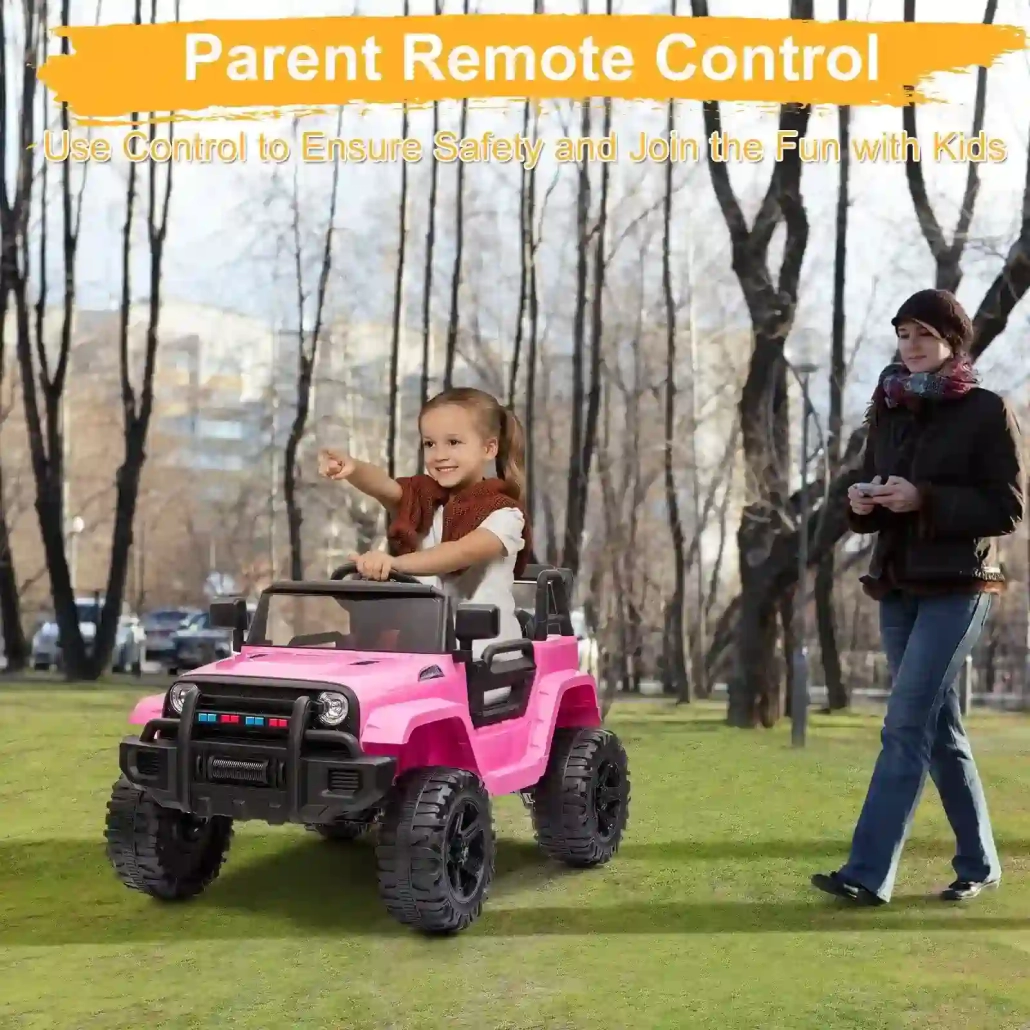
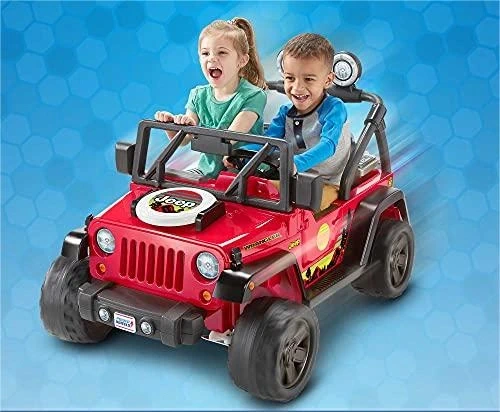
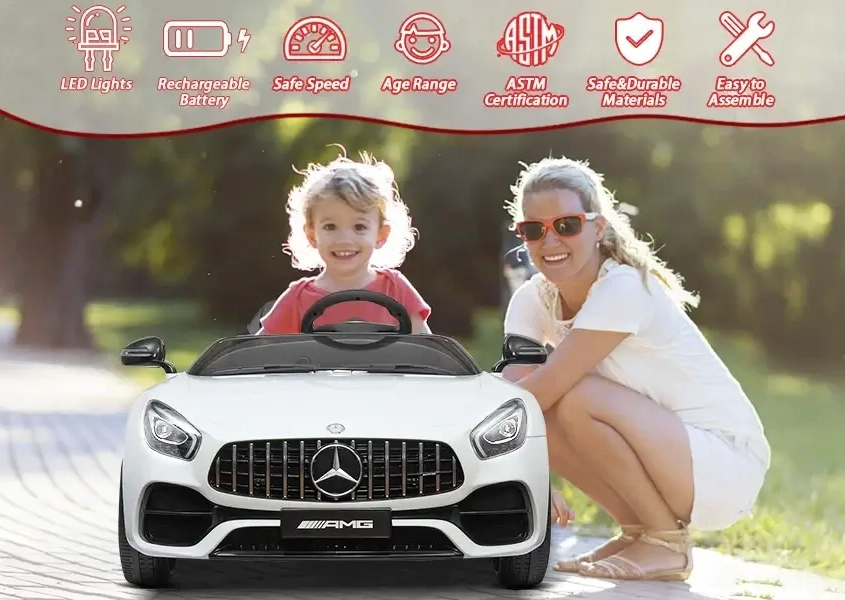

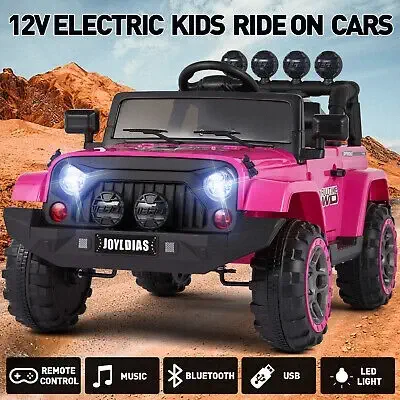
11 Key Factors to Consider When Selecting Your Kid's Ride On Car
Table of Contents
- 11 Key Factors to Consider When Selecting Your Kid's Ride On Car
- Understanding the Types of Ride On Cars
- 8 Essential Factors for Selecting the Perfect Ride-On Car
- 1. Deciphering Motor and Battery Specifications
- 2. Age-Appropriate Ride-On Cars
- 3. Considering the Driving Surface for Your Ride On Car
- 4. Assessing the Design and Quality of the Ride-On Car
- 5. Role of Remote Control in Ride-On Cars
- 6. Number of Seats in Ride On Cars
- 7. Important Notes on Shipping Arrangements
- 8. Understanding Warranty and After Sales Support
- Safety Features to Look For
- Uncovering the Power Source: Battery, Pedal, or Push Power
- The Right Battery for Your Kid's Ride-On Car
- The Importance of an Original Equipment Manufacturer (OEM) Battery
- Choosing the Right Battery Charger
- Battery Maintenance and Charging Tips
- Replacement and Upgrading of Batteries
- Understanding the Ideal Operating Conditions for Ride-On Cars
- Proper Storage and Care for Longer Life of Ride-On Cars
Table Of Content
1. Understanding the Types of Ride-On Cars2. 8 Essential Factors for Selecting the Perfect Ride-On Car- Deciphering Motor and Battery Specifications
- Considering the Driving Surface
- Age-Appropriate Ride-On Cars
- Assessing the Design and Quality of the Ride-On Car
- Role of Remote Control in Ride-On Cars
- Number of Seats in Ride-On Cars
- Important Notes on Shipping Arrangements
- Understanding Warranty and After Sales Support
Understanding the Types of Ride On Cars
When it comes to choosing a ride on car for your child, the options can feel overwhelming. There are numerous types and models, each with their own unique features and benefits. To make the selection process simpler, it's vital to understand the different types of ride on cars available.- Push/Pull Ride On Cars: These models are perfect for the little ones who aren't quite ready to take the driver's seat. Push or pull ride on cars, such as wagons and toy cars with handles, offer an engaging yet controlled play experience. As a parent, you have control over the ride on car's direction and speed, making this choice suitable for younger children.

- Pedal Ride On Cars: Pedal ride on cars offer a more active play experience. Resembling bicycles or tricycles, these ride on cars come equipped with pedals and steering controls. The speed is controlled by how fast your child can pedal, creating a safe yet fun environment for them to explore and learn.

- Electric Ride On Cars: For kids craving a real-life driving experience, electric ride on cars are the perfect choice. These battery-powered cars can provide an exciting, high-speed adventure within the safety confines of your home or yard. These models often come with remote control features, allowing parents to maintain control when necessary.
 Each type of ride on car offers a unique play experience, promoting different skills and levels of engagement. Therefore, consider your child's age, interests, and abilities when making a choice. Whether it's the hands-on interaction of a push/pull car, the physical activity involved with a pedal car, or the thrill and excitement of an electric car, there's a perfect ride on car out there for every child.
Each type of ride on car offers a unique play experience, promoting different skills and levels of engagement. Therefore, consider your child's age, interests, and abilities when making a choice. Whether it's the hands-on interaction of a push/pull car, the physical activity involved with a pedal car, or the thrill and excitement of an electric car, there's a perfect ride on car out there for every child.8 Essential Factors for Selecting the Perfect Ride-On Car
1. Deciphering Motor and Battery Specifications
When deciding on the perfect ride on car for your child, understanding the specifics of the motor and battery is crucial. This knowledge significantly influences the car's performance and how well it aligns with your child's needs.Single vs. Dual Motors
Initially, it's essential to recognize the difference between single and dual motor cars. A single motor car generally powers one back wheel, often sufficient for a child weighing up to 15 kg. Although its speed aligns with that of a dual motor, the single motor's performance might reduce with an increase in weight.On the other hand, dual motor ride on cars showcase motors on both back wheels. This feature provides a smoother ride, particularly beneficial for children weighing between 18 kg to 25 kg. The dual motor setup ensures that the ride on car maintains its speed, even with a heavier child, hence providing consistent performance.Evaluating Battery Size
Another essential factor is the battery size. A bigger battery is often a better choice as it directly influences the car's speed. The 12V battery is an ideal pick for most ride on cars. However, for younger children, a 6V battery might suffice. It's worth noting that the larger the battery, the faster the car can go. Rarely, you may find ride on cars with a 24V battery. These are usually larger cars that can seat two children.Understanding these nuances in motor and battery specifications will enable you to make an informed decision. Consequently, you'll ensure your child enjoys their ride on car experience while aligning with their weight and your safety considerations.2. Age-Appropriate Ride-On Cars
When selecting the perfect ride on car for your child, age is an essential factor to consider. The choice of the vehicle not only affects the comfort of your little one but also guarantees their safety.The Early Years: 0–2 Years Old
The motor skills of children in this age bracket are in the early stages of development. As a result, they are more susceptible to falls. Thus, choosing a ride on car that features supportive seats and a low-powered motor is crucial. These cars often have a slow walking speed and are designed for indoor use. Their controls are simple, often involving button systems rather than pedals.The Adventurous Years: 3–5 Years Old
At this age, children have significantly developed their reflexes and motor skills. As a result, they can handle more powerful ride on cars with normal walking speed. Depending on their ability and level of excitement, some may even manage 12V or 24V cars. Cars designed for this age group often feature foot pedals and sound effects for a realistic driving experience.The Advanced Years: 5–8 Years Old
By age five, children can handle more advanced ride on cars that correspond to their improved coordination skills. They favor cars that closely resemble real ones, such as licensed versions of Fords, Jeeps, and Ferraris. These vehicles include additional features to enhance the driving experience, and most children can easily manage a 24V ride on car.In essence, the age-appropriateness of a ride on car is a fundamental aspect to consider. Always ensure that the ride on car you pick suits your child's age and developmental stage, ensuring maximum fun and safety.3. Considering the Driving Surface for Your Ride On Car
The surface or area where your child will be driving their ride on car is another critical factor to think about. It not only impacts their enjoyment but also the durability of the car itself.Smooth, Flat Surfaces
If your child will mainly be driving on smooth and flat surfaces like your home's tiled floors or your driveway, cars with plastic tyres are a fantastic choice. These types of cars, like the Audi R8 Licensed Black 12v Ride On Kids Car, are designed to work best on even terrain, ensuring a smooth ride for your little one.Rough, Uneven Terrains
For adventurous little drivers who love to take their ride on cars off-road, vehicles with EVA rubber tyres are the best fit. These cars, like the Big 2-Seat Beach-Cruiser 12v Kids Ride On SUV, are designed to handle grass, gravel, and rocky grounds. They typically have a better ground clearance and larger tyres, perfect for uneven and rough surfaces. A ride on car with a more powerful battery, such as 24v, is recommended for these terrains to ensure optimum performance.In summary, considering the driving surface before buying a ride on car can greatly enhance your child's driving experience while also extending the lifespan of the car. It is essential to find a car that best suits the type of ground it will be regularly driven on.4. Assessing the Design and Quality of the Ride-On Car
In the vast world of ride on cars, you will come across a wide array of designs and styles that range from realistic replicas of actual cars to colorful, imaginative vehicles. The trick is to find the right balance between aesthetic appeal and quality construction.A Plethora of Styles
The first step is to understand your child's preferences. Are they fans of rugged SUVs or sleek sports cars? Do they adore quads or pedal cars? Are they captivated by licensed replicas of actual car models like Ferrari, Lamborghini, Mercedes AMG, Bentley, or Porsche? With countless ride on car models in the market, you'll find something that will perfectly fit your child's taste and interest.Licensed Replicas
These licensed replicas are exact miniatures of the real car versions and are typically top-tier in terms of design and quality. Since these ride on car manufacturers have to pay licensing fees to the car manufacturing company, they ensure the product's quality is top-notch. So, by opting for a licensed ride-on car, you get the dual advantage of stellar design and superior quality.Build Quality
In addition to design, the quality of the ride on car is another essential factor. A well-built car will not only last longer but also provide a safer and more enjoyable experience for your child. Look for sturdy construction, smooth finishes, and high-quality materials.In conclusion, when it comes to picking the perfect ride on car, both design and quality matter. Always ensure that the car's build quality matches its aesthetic appeal, guaranteeing a fun and safe driving experience for your little one.5. Role of Remote Control in Ride-On Cars
The wonder of motion is an irresistible lure for children. The thrill of controlling a ride on car can bring immense joy to your little one. Yet, for the younger kids who are still grasping the concept of acceleration, the excitement can quickly turn into a heart-pounding scene for the parents. This is where remote control enabled ride on cars come to the rescue, adding an extra layer of safety and peace of mind.Beginner-Friendly Choice
Remote control enabled cars are an excellent choice for beginners. They allow your kids to experience the joy of riding a car as early as 18 months. The most significant advantage is that your child can enjoy the car even though their feet don't reach the pedals yet. With the remote control in your hand, you can have full control of the car while they are safely seated.The Frequency Factor
One aspect to consider while choosing a remote control ride on car is the frequency. Some remote-controlled cars operate on the same frequency, like 27mhz or 41mhz, which could cause disruption if used simultaneously. To avoid any interference, it is best to opt for a car with a 2.4GHZ R/C, which functions effectively even around other R/C cars.Transition to Independence
As your child grows, around ages 3-5, they can start controlling the car using the pedals and steering wheel. This marks the beginning of their journey towards independence. While the remote control might no longer be in constant use, it serves as a reminder of their first ride on car and can be kept as a cherished memento.To summarize, remote control plays an integral role in providing a safe and enjoyable ride on car experience for your kids. It's not only a tool to ensure safety but also a stepping stone for your children towards operating their ride on car independently.
6. Number of Seats in Ride On Cars
Choosing the right number of seats in a ride on car depends on several factors, including your child's age, size, and preferences. But one thing's for sure, this choice can significantly influence your child's ride-on car experience. Let's delve into the nuances of choosing between single and multiple-seater ride on cars.Single Seat Ride On Cars
Single-seat ride on cars are an ideal option for children who love a more sporty, personalized experience. They are also excellent for smaller spaces, as their compact design does not require much room to navigate. This type of ride on car often mimics sports supercars like the Ferrari, Lamborghini, or Porsche. Moreover, storing single-seat cars is easier due to their compact size.2 Seater Ride On Car
2 seater ride on car offer a fun and shared experience. These are typically larger, resembling SUVs or off-roaders, and have the capacity to carry two children. But bear in mind that these cars might often be a 1.5 seater, depending on the size of the riders. However, they provide an opportunity for your child to share their ride-on car experience with a sibling or friend, fostering social interaction and cooperation.Selecting the Best Fit
Choosing between a single-seater and a two-seater largely depends on what you want your child to get out of their ride on car experience. If you prefer your child to share their playtime or if your space allows, a two-seater may be a great choice. On the other hand, if your child is the only user and storage is a concern, a single-seater ride on car might be the best bet.In summary, the number of seats in a ride on car can significantly influence the user experience. It's crucial to assess your needs, the available space, and your child's preference before making a choice.
7. Important Notes on Shipping Arrangements
Shipping arrangements for ride on cars can have a substantial impact on your buying experience. It's crucial to pay attention to various aspects such as shipping cost, delivery time, and return policy to avoid unexpected issues and ensure a smooth and satisfying purchasing process.Shipping Cost
The shipping cost for ride on cars can vary greatly, depending on the retailer's policy, your location, and the size and weight of the package. Some sellers offer free shipping, while others might charge additional fees. Before finalizing your purchase, always check the shipping charges to avoid unexpected costs.Delivery Time
Delivery time is another critical factor. Typically, it can range from a few days to several weeks, depending on your location and the seller's dispatch procedures. Make sure to check the estimated delivery time to know when you can expect the ride on car to arrive. This is especially important if you're purchasing it as a gift or for a special occasion.Return Policy
Despite the best quality checks and packaging methods, issues may occur during transportation, resulting in a damaged product. Therefore, it's essential to understand the return policy of the seller. Most reputable sellers offer a fair return and exchange policy for damaged goods.In conclusion, understanding the shipping arrangements for your ride on car purchase can save you from unforeseen costs and delays. It's always best to review all these aspects before making the final purchase to ensure a smooth and satisfying buying experience.8. Understanding Warranty and After Sales Support
Warranty and after-sales support are significant considerations when purchasing a ride on car. They can offer assurance of the product's quality, offer solutions if problems arise, and may even influence your decision on which ride on car to purchase.Warranty
Warranty for ride on cars generally covers any manufacturer's defects that might occur within a specific period from the purchase date. The duration and terms of the warranty can vary from brand to brand. Some offer extended warranties at an additional cost. It's crucial to read and understand the warranty details before purchase, ensuring it provides adequate coverage.After Sales Support
After-sales support is another essential aspect to consider. This support may include technical assistance, availability of replacement parts, and repair services. Good after-sales support can give you peace of mind, knowing that help is available if you encounter any issues with the ride on car.Factors to Consider
When considering the warranty and after-sales support, keep in mind:- Coverage: Make sure the warranty covers a wide range of potential issues, not just specific parts.
- Duration: A longer warranty period is generally better, as it offers more extended protection.
- Support Availability: Ensure the brand offers good after-sales support, which is easily accessible and helpful.
- Parts Availability: Check if the manufacturer provides easy access to replacement parts for your ride on car. It's crucial if you need a repair down the line.
Safety Features to Look For
Your child's safety is, without a doubt, the most important factor to consider when buying a ride on car. But what exactly should you be looking for in terms of safety features? Here are some key points to consider.Firstly, seat belts are crucial. This simple feature can keep your child secure in their seat and protect them from potential falls or tip-overs, especially during sudden stops or turns.Secondly, consider the car's speed. Many ride on cars come with an adjustable speed limit feature. This allows you to set the maximum speed that the car can reach. For younger children or beginners, a lower speed is recommended.Thirdly, look for ride on cars with a remote control feature. This allows you to take control of the car if needed, adding an extra layer of safety. It's particularly useful for younger children who may not yet have the coordination or judgement to drive safely.Fourthly, be aware of the materials and construction of the ride on car. It should be sturdy and durable, capable of withstanding minor bumps and scrapes. Ensure the edges are rounded and there are no sharp corners or parts that could potentially injure your child.Finally, check if the ride on car has an automatic stop feature. This means the car will automatically stop if your child takes their foot off the accelerator. It's a useful feature that can prevent accidents.In short, there are many safety features available on ride on cars. It's up to you to decide which ones are most important to you and your child. Always remember that no feature can substitute for adult supervision and appropriate safety gear such as helmets.
Uncovering the Power Source: Battery, Pedal, or Push Power
The source of power is another factor to consider when choosing a ride on car for your child. It influences how the car is driven and what kind of experience your child will have. There are generally three types of power sources: battery, pedal, and push power.Battery-powered ride on cars offer a realistic driving experience. These cars are typically operated using a foot pedal and a steering wheel. The battery runs the motor, which propels the car. The power and speed of these cars can vary, but they usually have a range of 1 to 6 miles per hour. The battery life can also vary based on usage and the type of terrain. Remember, the battery's charge and life can have a significant impact on how long your child can enjoy their ride.Pedal-powered cars are powered by your child's own efforts. They'll need to use their legs to pedal the car, which can be a great way to get some exercise. These ride on cars typically don't go as fast as battery-powered models, which might be preferable if you're concerned about safety.Lastly, push-powered ride on cars are perfect for the youngest drivers. These cars are pushed by a parent or guardian, giving you complete control over speed and direction. This type of car is ideal for toddlers who aren’t old enough to pedal or steer a car themselves yet.Choosing the right power source depends on your child's age, physical capabilities, and personal preferences. Each source has its own advantages and disadvantages, so weigh your options carefully. Remember to also consider the terrain where the ride on car will be used as this can influence your decision.The Right Battery for Your Kid's Ride-On Car
Choosing the right battery for your kid's ride on car isn't just about power. It's about ensuring the car's performance, safety, and longevity. There's a plethora of battery options available on the market, but you need to find the one that suits your child's ride on car perfectly. From voltage and capacity to the life cycle and safety features, various factors should be taken into consideration while making your selection.Understanding the power requirements of the ride on car is your first step. The battery you choose should match the car's voltage and capacity needs. If the car runs on a 12V system, for instance, you'll need a 12V battery. It's important to note that using a battery with a higher voltage than the car's motor can handle might lead to overheating and damage.The capacity of the battery, measured in amp hours (Ah), determines how long your kid's ride on car can run on a single charge. Higher capacity batteries provide longer run times, making them ideal for extended play sessions. However, they also tend to be larger and heavier, so you need to ensure the car can accommodate them.A standout battery manufacturer, Manly Battery, offers an array of customizable solutions for your child's ride on car. With over 13 years of experience, they provide an array of batteries that can be tailored to fit specific power requirements. Their products come with a ten-year warranty, reflecting the company's commitment to quality and longevity.Life span is another critical factor to consider. Rechargeable batteries like those from Manly Battery can go through more than 8000 cycles before their performance starts to degrade. This longevity means you won't have to worry about replacing the battery frequently, saving time and money in the long run.Safety is paramount when it comes to kids' toys, and batteries are no exception. Look for batteries with built-in safety features, such as overcharge, over-discharge, and short circuit protection. Some batteries, like those from Manly Battery, even come with a balanced circuit and can withstand violent impacts without exploding or catching fire.To wrap it up, choosing the right battery for your kid's ride on car is a careful balancing act. It should meet the car's power requirements while also being durable, safe, and reliable. With diligent research and consideration of these factors, you can find a battery that will make your child's ride on car a source of countless hours of safe, enjoyable playtime.
The Importance of an Original Equipment Manufacturer (OEM) Battery
You may be wondering what an OEM battery is and if it's important for your kid's ride on car. OEM, which stands for Original Equipment Manufacturer, refers to a battery produced by the same company that made the original battery for the ride on car. OEM batteries are designed specifically for the vehicle they are intended to power and typically come with a guarantee of compatibility and performance.Although using an OEM battery isn't a must, it can have its advantages. One of the primary benefits is that you can have complete confidence in its compatibility. OEM batteries are designed to meet the exact specifications of your kid's ride on car, which ensures a perfect fit and optimal performance. This can give you peace of mind knowing that the battery won't harm the vehicle or reduce its lifespan.OEM batteries can also offer a high degree of reliability. Since they're produced by the same manufacturer that created the ride on car, they're expected to provide a consistent level of quality and performance. This means they are less likely to fail or cause any unexpected issues.However, this doesn't mean that non-OEM batteries are a bad choice. Many third-party manufacturers, like Duracell, offer high-quality replacement batteries that are compatible with a wide range of ride on car brands and models. These batteries can perform just as well, as long as they match the voltage, capacity, and fit of the original battery.So, whether you opt for an OEM or a non-OEM battery for your kid's ride on car, what's most important is that it meets the required specifications of the vehicle. Make sure to check these details before making a purchase to ensure a safe and fun riding experience for your child.Choosing the Right Battery Charger
Just as important as the battery itself is the battery charger for your kid's ride on car. A well-matched charger not only ensures that your battery charges correctly, but it also plays a crucial role in maintaining the battery's health and extending its life.When selecting a charger, keep in mind that it should match the voltage and chemistry of your battery. If you have a 12-volt AGM battery, you'll need a charger that is compatible with 12-volt AGM batteries. For a 6-volt battery, a charger compatible with 6-volt batteries is needed.Moreover, a smart battery charger can be a valuable investment. These chargers offer an intelligent way to recharge ride on car batteries. They deliver a low amperage charge and automatically stop charging once the battery is full. This feature can prevent overcharging, which can shorten the lifespan of the battery. If a drop in voltage is detected, a smart charger reactivates to top off the charge, ensuring the battery remains at its best.Locating the perfect charger might seem challenging, but you'll find that many companies have made it easy for you. For example, online platforms provide a dedicated battery charger page where you can simply input the brand and model of your kid's ride on car, and you'll be guided to a list of compatible chargers.Ensuring you have the right battery charger is crucial in maintaining the battery's health and longevity, ultimately contributing to your child's uninterrupted enjoyment of their ride on car. Make sure to select carefully, considering all the aspects mentioned above.
Battery Maintenance and Charging Tips
Keeping your kid's ride on car battery in top shape involves more than just plugging it into a charger. It requires good maintenance habits and attention to detail. Here are some tips to help maximize your battery's lifespan and performance:- Regularly charge your battery, and don't let its charge get too low. Batteries that are regularly kept at a low charge can have a shortened lifespan.
- Keep track of how long your battery is on the charger. Overcharging can damage a battery, reducing its life and effectiveness. Consult your owner's manual for the recommended charging time.
- Remember that the first charge may take longer than subsequent ones. It's common for a new battery to need a longer initial charge before it reaches its full capacity.
- Understand the expected charging time. On average, a 6-volt battery may take around 6 hours to fully recharge, while 12-volt and 24-volt batteries may need around 10 hours.
- Recharge the battery when you notice a slowdown in the ride on car. Some models feature a meter indicating when it's time to recharge. If yours doesn't, look out for signs such as slower speeds or less power.
- Consider investing in a second battery. Ride on car batteries typically only provide between 45 to 90 minutes of ride time. Having a second battery can extend the fun.
- Protect your battery from extreme temperatures. Extreme hot and cold can affect a battery's performance and lifespan. Store your ride on car indoors when not in use to protect it from the elements.
- Finally, at the end of its life, consider recycling your old battery. Many locations accept old batteries and ensure they are disposed of in an environmentally friendly way.
Replacement and Upgrading of Batteries
Even the best batteries won't last forever, but knowing when and how to replace and upgrade your child's ride on car battery will keep the fun going.- When to replace: Ride on car batteries typically last 2 or 3 years if properly maintained. As the battery ages, it begins to lose capacity. If you notice the car running for shorter periods even after full charges, or if the battery fails to charge at all, it's time to consider a replacement.
- Selecting the right replacement: Choose a replacement battery with the same voltage as the original. This ensures compatibility with the ride on car. You might want to consider a higher amp hour (Ah) battery as a replacement. Higher Ah batteries can run the car longer on a single charge, much like a bigger gas tank in a car means longer between fill-ups.
- Upgrading batteries: If you're looking for more power or longevity, consider an upgrade. Ensure any upgrade still fits correctly in the battery compartment and that the car's electrical system can handle the increased voltage or amperage.
- Checking the ride on car: If the car runs for only a short time after replacing the battery, check other factors. Is the weight in the car exceeding the manufacturer's recommendation? Is the ride on car frequently being used on grass or uphill, which requires more power from the battery? Consider these factors when troubleshooting.
- Maintaining the new battery: Just like the original, your new battery needs proper care to ensure it lasts. Regularly charge it, avoid overcharging, and store it in a temperature-controlled environment to prolong its lifespan.
Understanding the Ideal Operating Conditions for Ride-On Cars
Getting the most out of your child's ride on car involves more than just maintaining the battery. You also need to consider the conditions under which the car operates. These conditions can significantly impact the performance and lifespan of the car and its battery.- Weight Limits: Always adhere to the manufacturer's recommended weight limit. Overloading the ride on car can strain the battery and motor, leading to shorter run times and potential damage.
- Terrain: Flat, smooth surfaces are the best for ride on cars. Rough or uneven terrain, like grass or slopes, requires more power from the battery, reducing ride time. Consider the terrain when choosing the car and battery and when planning where your child will play.
- Temperature: Extreme hot or cold temperatures can affect battery performance and overall operation of the ride on car. Batteries may not hold a charge as well in very cold weather, while hot weather can cause parts to wear out more quickly.
- Storage: Store the ride on car in a stable, temperature-controlled environment when it's not in use. Changes in temperature can shorten the battery life. Ensure the battery is fully charged before storing it, as this helps maintain the battery's lifespan.
Proper Storage and Care for Longer Life of Ride-On Cars
To keep your child's ride on car in top condition, appropriate storage and regular maintenance are crucial. Just like a real car, a ride on toy car requires a certain degree of care to ensure it stays in good working order.- Battery Storage: Storing the ride on car battery correctly when not in use is vital to extend its life. Never store a battery when it's not fully charged. Also, avoid places with fluctuating temperatures — this can shorten battery life significantly.
- Ride-On Car Storage: Always store the ride on car in a cool, dry place to avoid any damage from the elements. If possible, keep it indoors when not in use. This can prevent weathering of the plastic and fading of the paintwork.
- Cleaning: Regular cleaning of the ride on car is a must. Use a damp cloth to wipe down the exterior and clean any dirty spots. Keep the car dry to prevent rust on metal parts and mold on plastic parts.
- Inspection: Regularly inspect the car for any loose screws, worn out tires, or any other signs of damage. Make sure to fix any problems as soon as they arise to prevent further damage.
- Battery Maintenance: Periodically check the battery to make sure it's not leaking or swollen. If you spot any signs of damage, replace the battery immediately. Also, remember to charge the battery after every use to ensure it's ready for the next play session.

